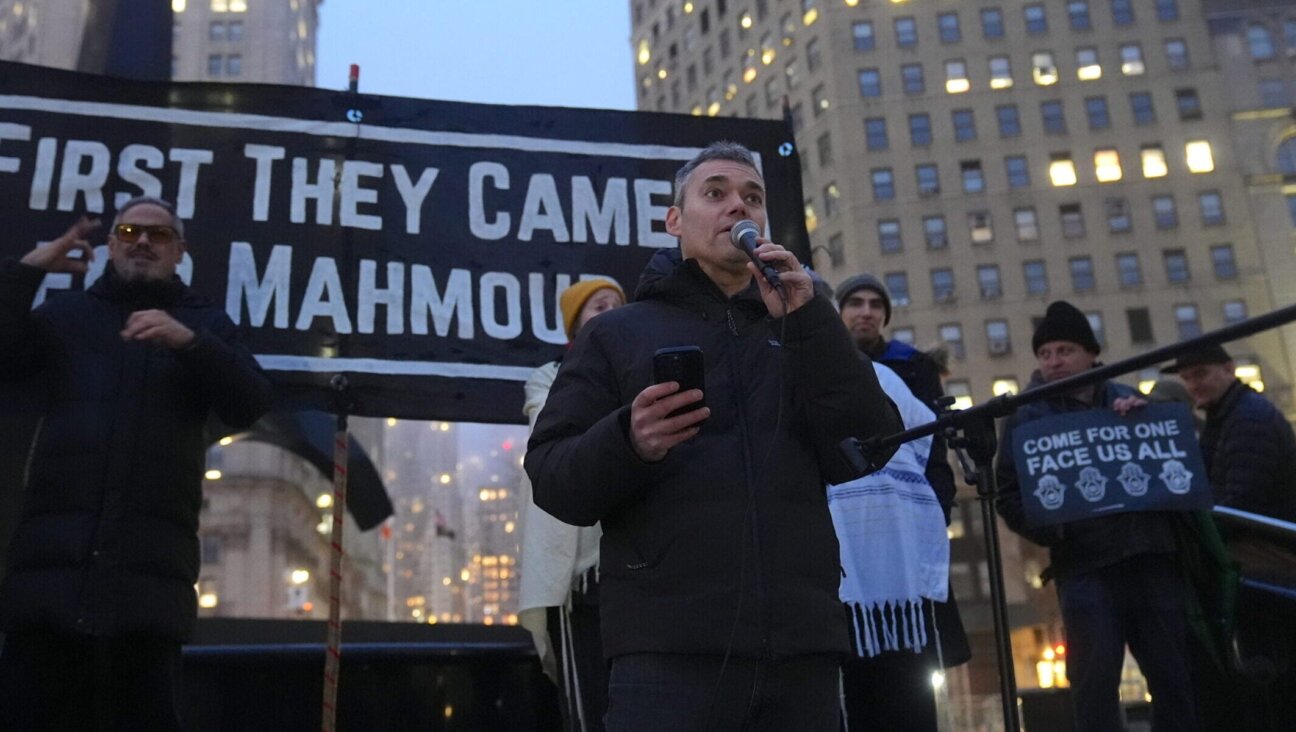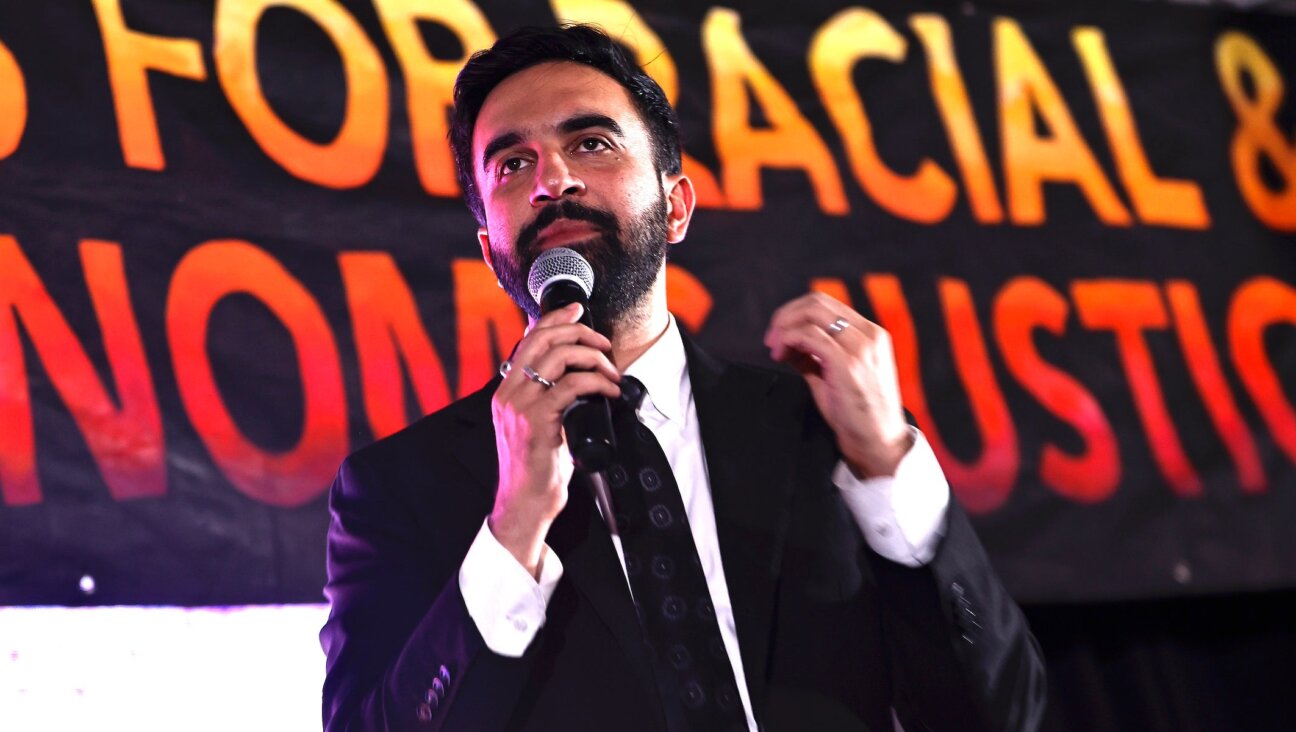Jewish Meaning Seen in ‘Gates’
On Saturday, thousands of people watched as miles of orange-hued fabric were unfurled, adorning the 7,500 “Gates” that artists Christo and Jeanne-Claude had arrayed along the serpentine byways of New York City’s Central Park.
To some observers, though, the launch of the art project, the largest in New York’s history, hinted at deeper and more ancient meaning. A few hours after the installation’s inauguration, Michael Strassfeld, a rabbi whose congregation meets just a few short steps from the celebrated 16-day installation, brought together a group of some 70 of his congregants for a Sabbath-afternoon talk on the place of the gate in Jewish thought.
Traditionally, explained the rabbi, the city gate is where the action is: where one goes for news, for trade. It is where justice is administered. The gate is no less central in the relationship between man and God. One need think only of the gates of prayer, the gates of repentance. The closing portion of the Yom Kippur liturgy, the Ne’ilah service, which centers on the closing of the heavenly gates, is regarded as the penitent’s last chance at redemption. The gate is the threshold between the known and the unknown, past and future. It’s a place of risk, where demons lurk; it’s where one hangs the mezuzah.
Christo and Jeanne-Claude are playing with this doubleness, the rabbi said. “They’re clearly focusing on the intersection of nature and art.” And they’re creating a space for reflection, introspection. “The affect of the installation is to make people look at Central Park again, the shape and the flow and the frame of it.”
Strassfeld, co-author of the celebrated “Jewish Catalogue,” is hardly the first to draw parallels between Judaism and the work of Christo and Jeanne-Claude. In 1994, when the German Parliament was debating whether or not to allow the wrapping of the Reichstag in Berlin, Konrad Weiss, a Green Party lawmaker, used a Jewish argument to endorse the project.
“In the Jewish faith,” he said, “the Torah rolls are wrapped in order to remind us of the preciousness of what they contain. The Reichstag will not be desecrated by Christo’s wrapping, it will be ennobled.”
Wrappings and coverings constitute an astounding number of Judaism’s ritual objects: the curtain for the Holy Ark, the prayer shawl, the wedding canopy, the kittel prayer robe — each endowing what it covers with ceremonial uniqueness. And such, some say, has been the effect of the Gates’ billowing fabric on visitors in Central Park.
“Now one no longer ambles through the park,” wrote New York Times art critic Michael Kimmelman, “but rather saunters below the flapping nylon. Paths have become like processionals, boulevards decked out as if with flags for a holiday. Everyone is suddenly a dignitary on parade.”
Strassfeld concluded his lesson with a pair of songs: first the psalm Pitchu Li Shaarei Tzedek (“Open to me, O you gateways of justice”), and then the spiritual “Twelve Gates to the City” (Rich and the poor welcome to the city/Young and the old welcome to the city).
“There was something very nice about being a Jewish community together in the park, experiencing the gates,” Strassfeld said afterward. “There were lots of people walking by, some people stopping. We were singing, and some joined in. It just all came together in a very natural way.”
















